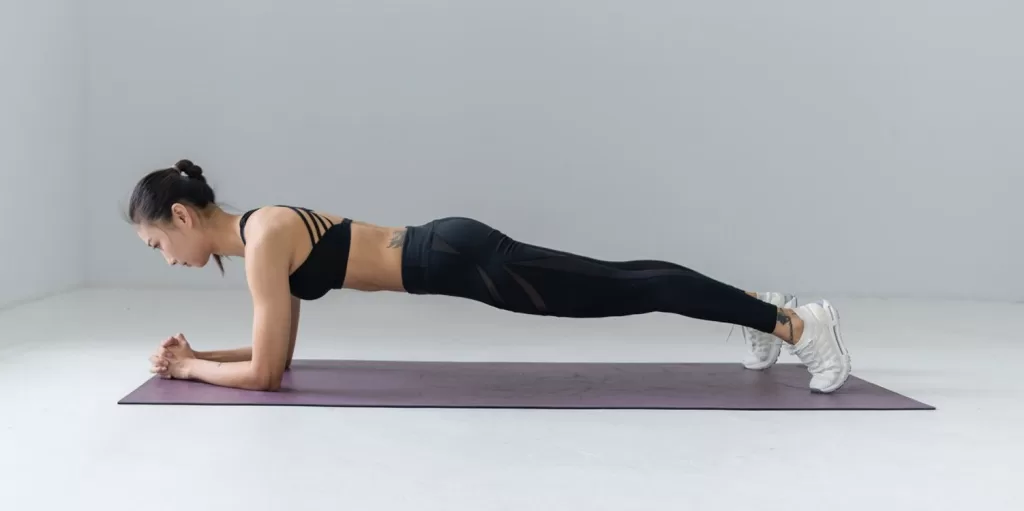Plank to Lower Blood Pressure

Strength-training exercises such as wall squats or holding the plank position are among the best ways to lower blood pressure, a study suggests.
Recent research conducted by UK scientists has revealed that current exercise guidelines require updates. The study, published in the renowned British Journal of Sports Medicine, examined data from 16,000 individuals.
Isometric exercises, such as wall squats and planking, have been found to be more effective than aerobic exercise to reduce high blood pressure. Furthermore, low-impact exercises are advantageous in building strength without causing excessive strain on muscles or joints, which makes them an ideal option for people with limited mobility.
For instance, the plank position can be used to strengthen abdominal muscles by taking the press-up position and extending the legs while keeping the elbows below the shoulders.
How to perform a Plank

- Elbows beneath shoulders
- Straight back
- Hold for two minutes
How to perform a Wall Squat
- Back against wall
- Feet 60cm from wall
- Thighs parallel to ground
- Hold tor two minutes

Effects of different exercises on blood pressure
Research shows that isometric exercises cause a different type of physical stress on the body than aerobic workouts.
Holding postures for 2 minutes can cause muscle tension and impact blood circulation. Proper breathing is important. High blood pressure can lead to serious health issues such as heart attacks and strokes.
Usually, the recommended treatment for this ailment involves taking prescribed medication. Additionally, it is advisable to adopt a healthy dietary regimen, limit alcohol intake, quit smoking, and maintain a consistent exercise routine.
Over-40s are advised to have their blood pressure checked every five years.
Researchers analyzed data from 15,827 individuals in 270 clinical trials published between 1990 and 2023. The participants were required to exercise for at least two weeks.
They found resting blood pressure was reduced by:
- 4.49/2.53mmHg after aerobic-exercise training (such as running or cycling)
- 4.55/3.04mm Hg after dynamic resistance or weight training
- 6.04/2.54mmHg after combined training (aerobic and weights)
- 4.08/2.50mmHg after high-intensity interval training (short bursts of intense exercise with periods of rest in between)
- 8.24/4mmHg after isometric-exercise training (planks and wall squats)
Even though these drops may be small, they possess the ability to minimize an individual’s likelihood of experiencing a stroke.
Recommendations
It is strongly advised by UK guidelines that adults partake in a minimum of 150 minutes of moderate-intensity exercise per week or 75 minutes of vigorous exercise in order to significantly reduce the risk of stroke.
Daily weight-bearing exercise for 30 minutes and muscle-strengthening exercise twice a week can lower osteoporosis risk. Holding a position or doing wall squats for two minutes can also be highly beneficial in improving osteoporosis. Furthermore, doing the plank position four times is an effective way to enhance bone health.
Improve heart health and reduce risk of heart disease with high-intensity interval training, resting for two minutes between each session, three times a week. The British Heart Foundation charity confirms that regular exercise is beneficial for maintaining a healthy heart. Numerous studies have demonstrated that regular exercise can significantly reduce the risk of heart disease and circulatory issues by up to 35%. It is a proven fact that individuals who engage in enjoyable exercise are more likely to continue long-term, which is essential for maintaining healthy blood pressure.











